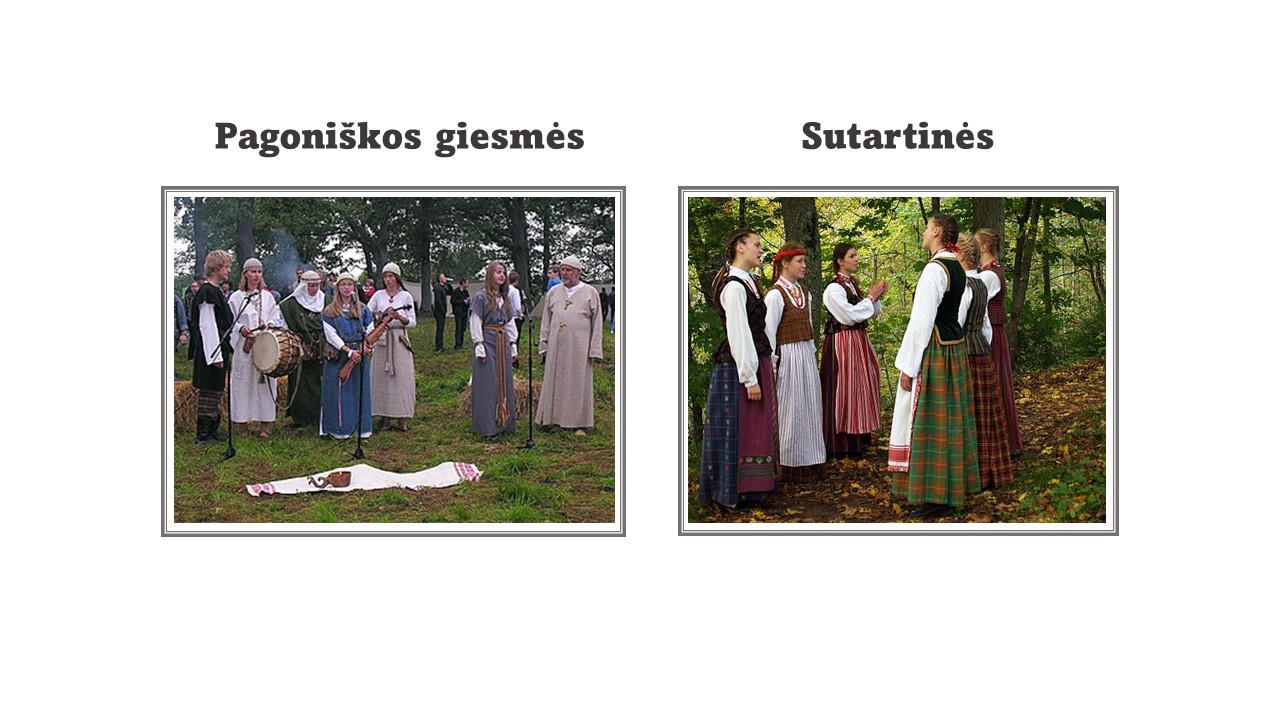
SPOTLIGHT ON LITHUANIAN CULTURE! CHAPTER 13: Lithuanian unique songs

Pagan hymns
Before Christianity was accepted in Lithuania, these hymns are often sung about various Lithuanian (also Latvian and Prussian) gods, often mentioning “Žemyna”, “Perkūnas”, “Gabija”, “Saulė” and others. Ghosts are also very important in these hymns, as well as the nine-horned deer. It is believed that this genre may be one of the oldest in Lithuanian folk music.
This genre has either a pagan or Christian focus, and the Christian sub-genre is very new compared to the others. Most of the hymns of Christian Lithuania originated from the combination of Christian texts with folk melodies, and began to take shape in the 16th and 17th centuries with the Christianization of the peasantry. Some of the hymns are syncretic in nature and contain elements of the old pagan faith.
We invite you to listen to Pagan hymns: https://www.youtube.com/watch?v=RTJzRWcRX30
Sutartinės:
Sutartinės– Lithuanian multipart songs – are a unique phenomenon of traditional Lithuanian music, born before the Christianization of Lithuania and widespread throughout Aukštaitija, the north-eastern region of Lithuania. Sutartinės (from the word sutarti – to be in concordance) are a phenomenon of traditional Lithuanian music – an extremely old form of polyphonic music that emerged even before the Christianization of Lithuania. It was the general aspiration to “mutually agree” and “be in concordance” that determined the origin of the name. A characteristic feature of all Sutartinės is the simultaneous sound of different melodies and texts. Sutartinės are a syncretic (the merging of elements of different religions) art form which reflects the connection between word, music and dance.
A distinctive feature of Lithuanian multipart songs is that harmony is created by accords of dissonant intervals – seconds. These accords are considered a paradox in European music theory.
Lithuanian multi-part songs were inscribed on the UNESCO Representative List of the Intangible Cultural Heritage of Humanity on November 16, 2010, by the Intergovernmental Committee for the Safeguarding of the Intangible Cultural Heritage.
This information was reprinted from www.atostogoskaime.lt
We invite you to listen to a sutartinė: https://www.youtube.com/watch?v=nrCgicL2KIQ; https://www.youtube.com/watch?v=Wbyn61KgaqA
LIKE WHAT THE LITHUANIAN WORLD CENTER IS DOING? SUPPORT US AT https://www.lcenter.org/donate/